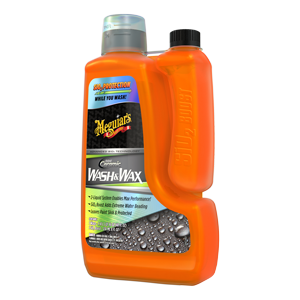Hybrid Ceramic SiO2 Boost G2108 [G210808]
 |
Ingredients:
| Ingredients | CAS Number | Function |
|---|---|---|
| Light Aromatic Hydrocarbons | 64742-47-8 | Solvent |
| Polyalkylsiloxane with Functionalized Silica | Withheld as CBI | Gloss Enhancer |
| Isopropanol | 67-63-0 | Solvent |
| Aminosiloxane Compound | Withheld as CBI | Gloss Enhancer |
| Benzyl Benzoate | 120-51-4 | Fragrance Component |
| Orange Oil | 8008-57-9 | Fragrance Component |
| Fragrance Ingredient | Withheld as CBI | Fragrance Component |
Last Updated: 06/21/24
CA Chemicals of Concern
- Chemicals known to the State of California to cause cancer or reproductive toxicity that are listed pursuant to the Safe Drinking Water and Toxic Enforcement Act of 1986 (Chapter 6.6 (commencing with Section 25249.5 of Division 20)).
- Chemicals classified by the European Union as carcinogens, mutagens, or reproductive toxicants pursuant to Category 1A or 1B in Annex VI to Regulation (EC) 1272/2008.
- Chemicals included in the European Union Candidate List of Substances of Very High Concern in accordance with Article 59 of Regulation (EC) 1907/2006 on the basis of Article 57(f) for endocrine disrupting properties.
- Chemicals for which a reference dose or reference concentration has been developed based on neurotoxicity in the federal Environmental Protection Agency’s Integrated Risk Information System.
- Chemicals that are identified as carcinogenic to humans, likely to be carcinogenic to humans, or as Group A, B1, or B2 carcinogens in the federal Environmental Protection Agency’s Integrated Risk Information System.
- Chemicals included in the European Chemicals Agency Candidate List of Substances of Very High Concern in accordance with Article 59 of Regulation (EC) 1907/2006 on the basis of Article 57(d), Article 57(e), or Article 57(f) of Regulation (EC) 1907/2006 for persistent, bioaccumulative and toxic, or very persistent and very bioaccumulative properties.
- Chemicals classified by the European Union in Annex VI to Regulation (EC) 1272/2008 as respiratory sensitizer category 1.
- Group 1, 2A, or 2B carcinogens identified by the International Agency for Research on Cancer.
- Neurotoxicants that are identified in the federal Agency for Toxic Substances and Disease Registry’s Toxic Substances Portal, Health Effects of Toxic Substances and Carcinogens, Nervous System.
- Persistent bioaccumulative and toxic priority chemicals that are identified by the federal Environmental Protection Agency National Waste Minimization Program.
- Reproductive or developmental toxicants identified in Monographs on the Potential Human Reproductive and Developmental Effects published by the federal National Toxicology Program, Office of Health Assessment and Translation.
- Chemicals that are identified as known to be, or reasonably anticipated to be, human carcinogens by the 13th Report on Carcinogens prepared by the federal National Toxicology Program. Subsequent revisions to this list shall not be incorporated.
- Chemicals identified by the federal Environmental Protection Agency’s Toxics Release Inventory as Persistent, Bioaccumulative and Toxic Chemicals that are subject to reporting under Section 313 of the Emergency Planning and Community Right-to-Know Act of 1986 (42 U.S.C. Sec. 11001, et seq.).
- Chemicals for which notification levels, as defined in Section 116455, have been established by the State Department of Public Health or the State Water Resources Control Board.
- Chemicals for which primary maximum contaminant levels have been established and adopted under Section 64431 or 64444 of Title 22 of the California Code of Regulations.
- Chemicals identified as toxic air contaminants under Section 93000 or 93001 of Title 17 of the California Code of Regulations.
- Chemicals that are identified as priority pollutants in the California water quality control plans pursuant to subdivision (c) of Section 303 of the federal Clean Water Act and in Section 131.38 of Title 40 of the Code of Federal Regulations, or identified as pollutants by the state or the federal Environmental Protection Agency for one or more water bodies in the state under subdivision (d) of Section 303 of the federal Clean Water Act and Section 130.7 of Title 40 of the Code of Federal Regulations.
- Chemicals that are identified with noncancer endpoints and listed with an inhalation or oral reference exposure level by the Office of Environmental Health Hazard Assessment pursuant to paragraph (2) of subdivision (b) of Section 44360.
- Chemicals identified as priority chemicals by the California Environmental Contaminant Biomonitoring Program pursuant to Section 105449.
- Chemicals that are identified on Part A of the list of Chemicals for Priority Action prepared by the Oslo and Paris Conventions for the Protection of the Marine Environment of the North-East Atlantic.
- Chemicals that are identified as persistent, bioaccumulative, and inherently toxic to the environment by the Canadian Environmental Protection Act Environmental Registry Domestic Substances List.
- The Washington Department of Ecology’s Persistent, Bioaccumulative, Toxic (PBT) Chemicals identified in Chapter 173-333 of Title 173 of the Washington Administrative Code.
